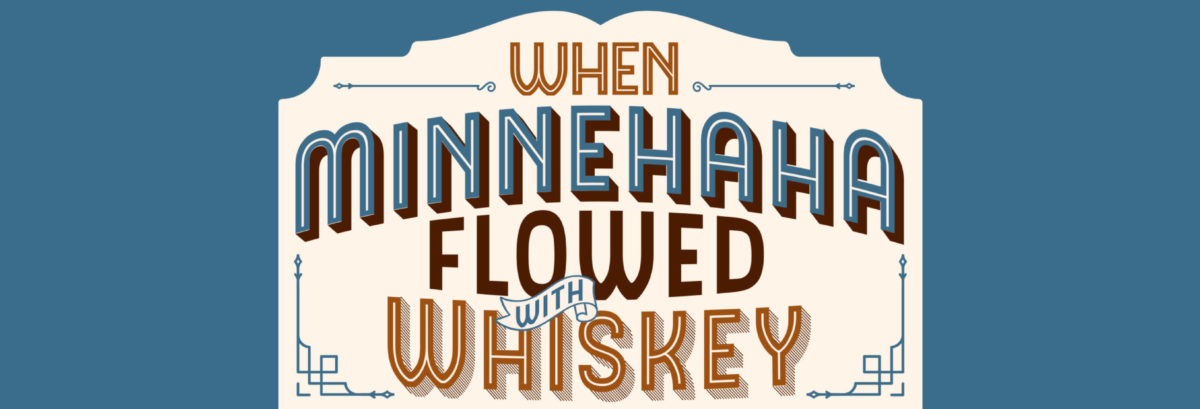There’s a lot of groundwater just below the surface in the Minnehaha Falls area. This is hardly a surprise to anyone who takes winter walks in the park.

People in the neighborhood used to go to springs to get their drinking water in buckets. One well-known spring was called the Enchanted Spring, a bit further upriver from where the Lock and Dam was built. It was said to be medicinal, and that people who drank it noticed “a vast improvement in their digestive organs.” [1] Of course that “improvement” might have been diarrhea caused by contamination from area outhouses.
The Park Board had a great interest in dewatering, re-routing, and controlling all the unruly ground water flowing through the area. Within the Minnehaha Gorge stabilization of the sides of the gorge was important. But even unto today, the Park Board provides pumps offering safe ground water along Lake Harriet Parkway and in other places, although Minnehaha Park is not one of them. And this water supply is constantly checked for purity.
In 1936, there was a public access spring in Minnehaha Park.

The accompanying text read:
The spring at the south end of the park was rehabilitated. A rustic retaining wall was built along the bank and the running spring was diverted to a pipe extending up from an alcove in the wall. A small underpass was built to permit passage of the stream under the limestone pathway which extends along the wall.
But just where was this, and when did it disappear? The south end of the park had probably extended to 54th Street by 1936, so the spring could be anywhere between the south side of the falls and 54th St. So where was “along the bank”? Did this refer to the edge of the drop-off down to the creek level or the creek bank itself? What was that small open pavilion, that looks like nothing so much as a fish-cleaning shack? These are (as yet) unsolved mysteries.
The WPA also re-laid 600 feet of tile drain in 1936 in the south end of the park. Probably this was to manage the outflow of this spring.
One can see from the shadows that the photographer is likely facing roughly southwest, but that detail is a mere guess.
An update: The Hennepin County Library Special Collections file on Minnehaha Park includes this article from an un-recorded newspaper that was likely the Tribune. Much about this spring is explained in the clipping dated August 21, 1942:
Water Unsafe So It’s Farewell to ‘Haha Spring
The favorite spring which used to bubble in Minnehaha Park near the Soldiers Home bridge just ain’t gonna be no more.
Alderman Edwin I. Hudson of the twelfth ward asked the board of park commissioners whether something couldn’t be done about having it flow again. Residents have missed it.
Superindendent [sic] C. A. Bossen offered explanation. Dr. F. E. Harrington, health commissioner, had advised that analysis had shown the water to be unsafe for human consumption. The park board decided to close it up.
Putting up barricades, Bossen continued, had been futile in other similar cases. Folks just got at the water anyway.
Then Uncle Sam asked the park board if it had a spot somewhere for deposit of a lot of earth and rocks Uncle Sam was collecting on a big project. Uncle Sam was told the stuff might be tossed in on the spring. It was.
“Some 2,000 yards of earth and rock were thrown in there,” said the superintendent. “That spring is gone, for good.”
And now the question is: where is there 2,000 yards of 70-year-old clean fill near the Soldiers’ Home Bridge?
[1] “Godfrey Tract Offers Choice Lots.” Minneapolis Tribune, January 17, 1909

One thought on “The WPA works in Minnehaha Park, 1936. Part 4: A Spring in the Park.”